Interior Landscape Design
By: Rick Hess / Mae Case, DI
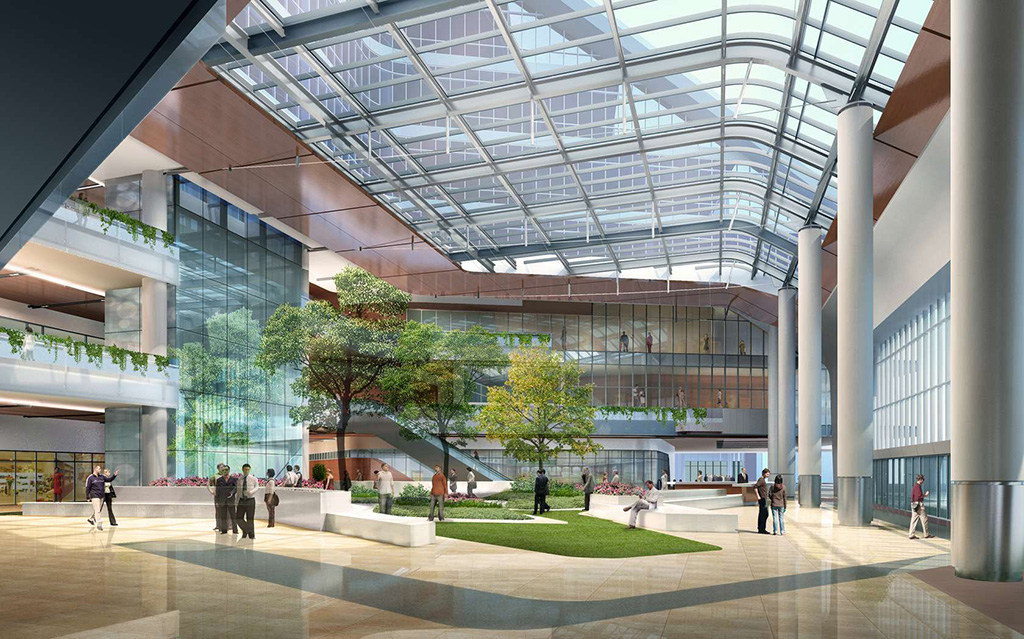
Hongqiao International Medical Center Shared Facility, Shanghai
Have you noticed more and more living walls and vertical gardens popping up in your city? While some interior design trends come and go in the blink of an eye (remember when Pinterest was awash in herringbone?), Design Institute of San Diego expects interior landscape design to be a sustainability trend with staying power, since these plant features can bring health benefits as well as an intriguing focal point. Although designers and architects have been incorporating plants into their spaces for decades, as the desire to “go green” has gone mainstream, clients are increasingly interested in design features that put their green credentials on display. Or the chef at the new restaurant on the block may opt to grow his or her own herbs within the restaurant walls, supporting the local movement.
Interior designers may also choose to bring a landscape architect onto the team to design a vertical garden in their client’s lobby. However it’s implemented, interior landscape design is catching on in a very big way and its benefits are plentiful.
Interior Landscape Design
Renaissance Barcelona Fira Hotel
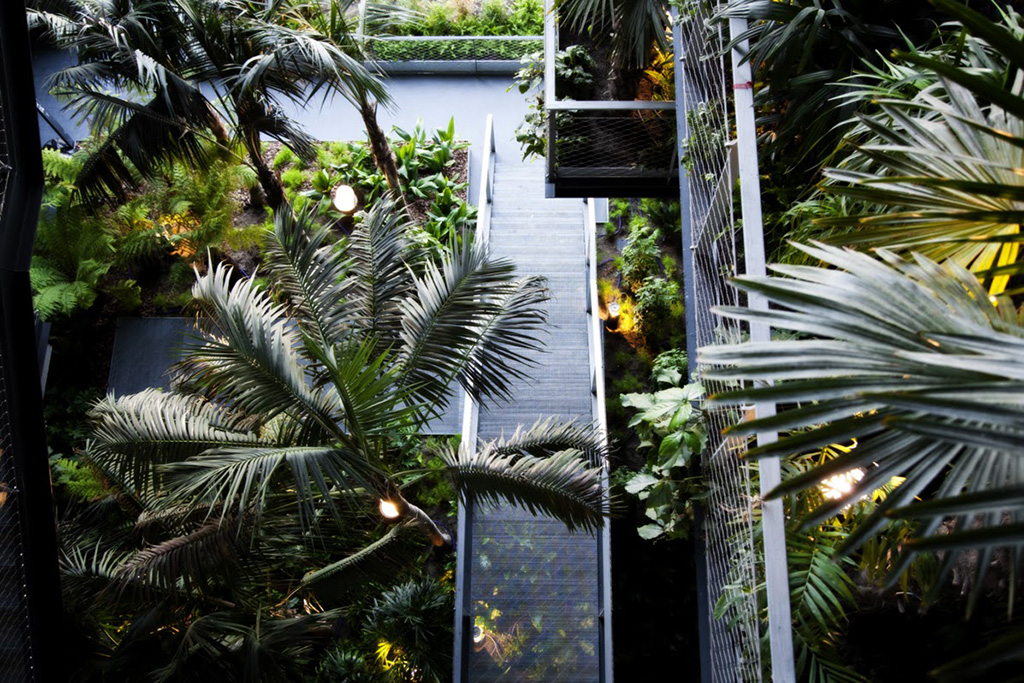
Renaissance Barcelona Fira Hotel, Barcelona designed byAteliers Jean Nouvel, Ribas & Ribas Arquitectos
The Renaissance Barcelona Fira Hotel features an elaborate vertical garden floating between two major structures. The atrium is filled with vegetation and palm trees, improving indoor air quality while providing a rich green environment. According to as architecture, “these plants create a make-shift greenhouse, with greenery meeting guests on every floor.”
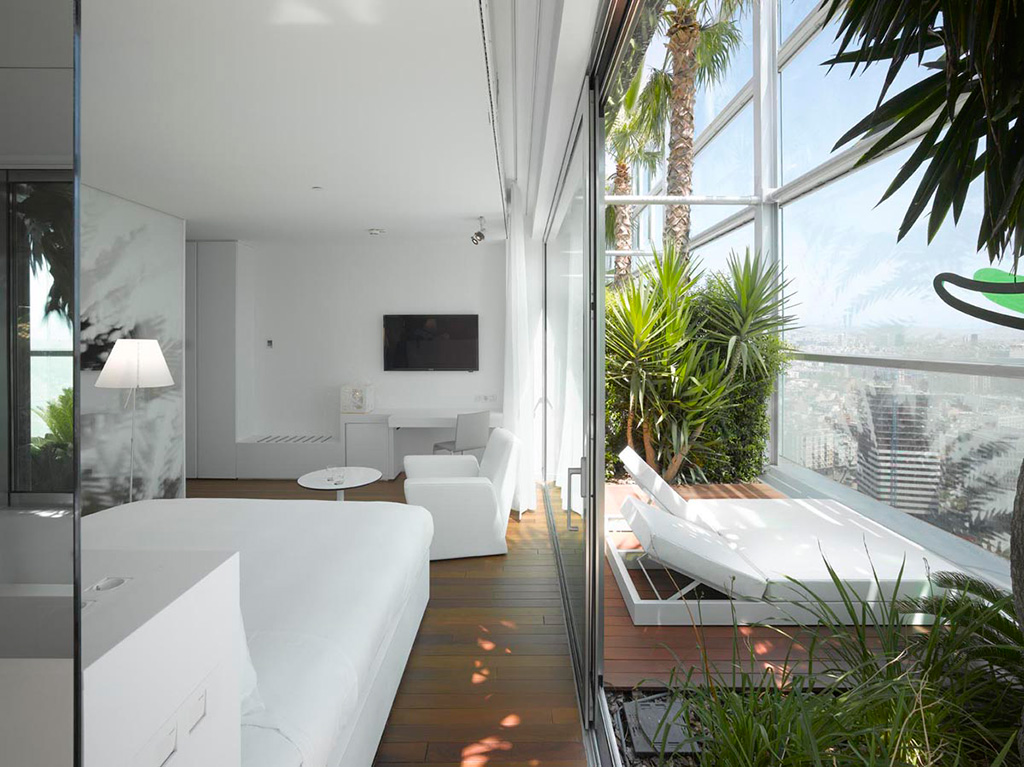
Renaissance Barcelona Fira Hotel, Barcelona designed byAteliers Jean Nouvel, Ribas & Ribas Arquitectos
Izakaya Den
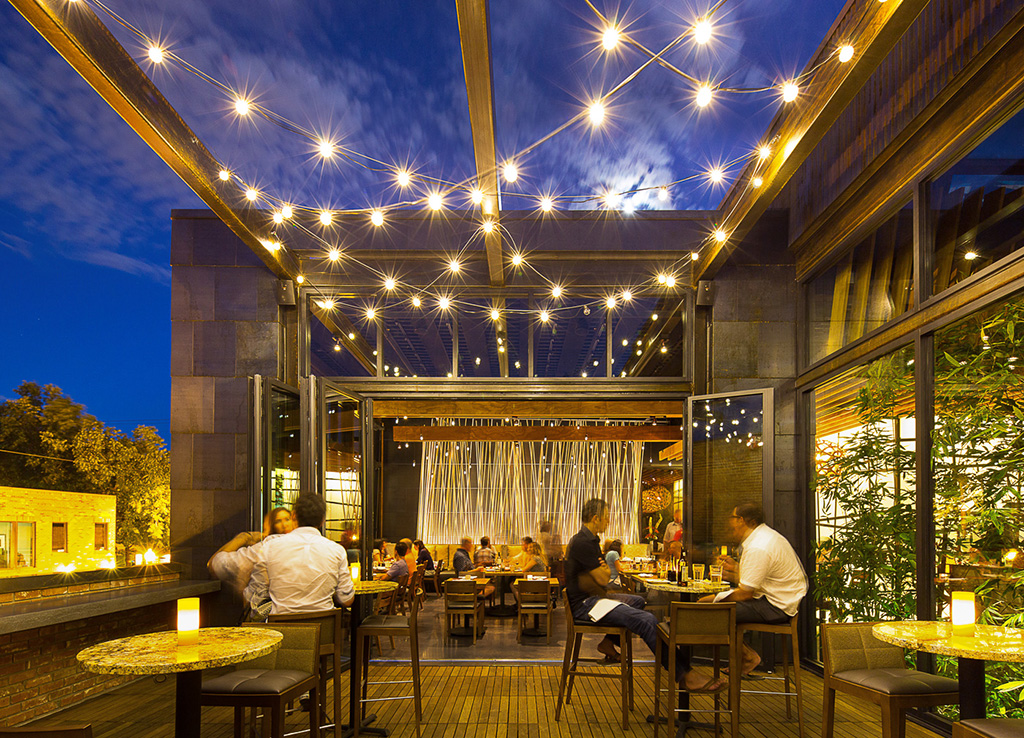
Izakaya Den, Denver, designed by Roth Shepard Architects, photography by James Florio
The Izakaya Den is known as “the sushi capital of Denver” and its interior landscape design truly sets this Japanese restaurant apart from the rest. The luscious garden of bamboo provides an indoor/outdoor connection that visitors are sure to remember.
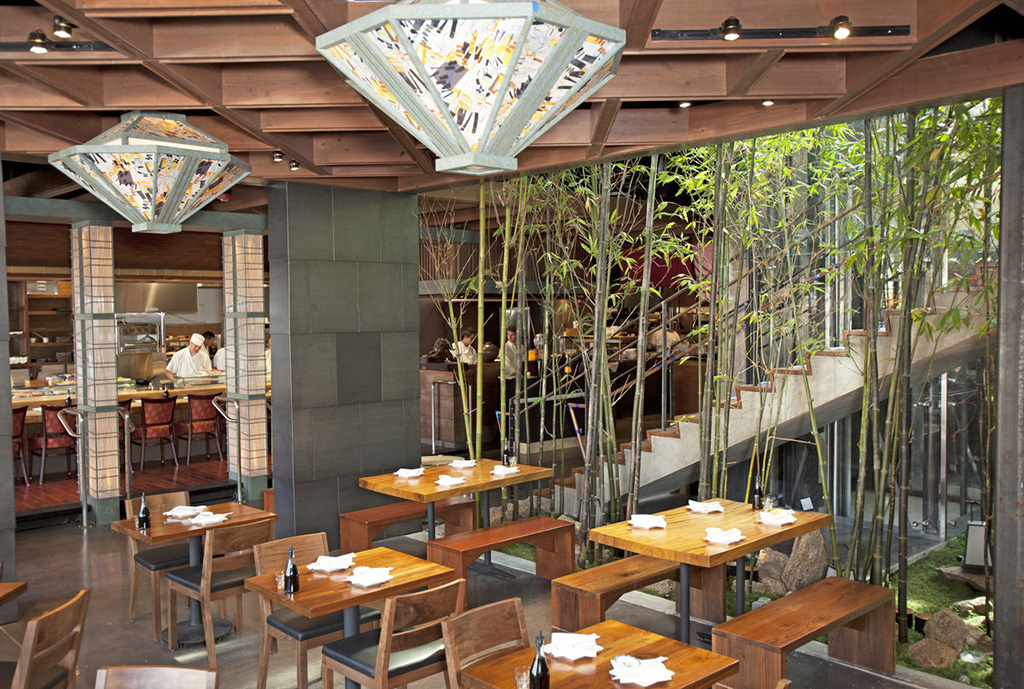
Izakaya Den, Denver, designed by Roth Shepard Architects, photography by James Florio
The Patio on Goldfinch
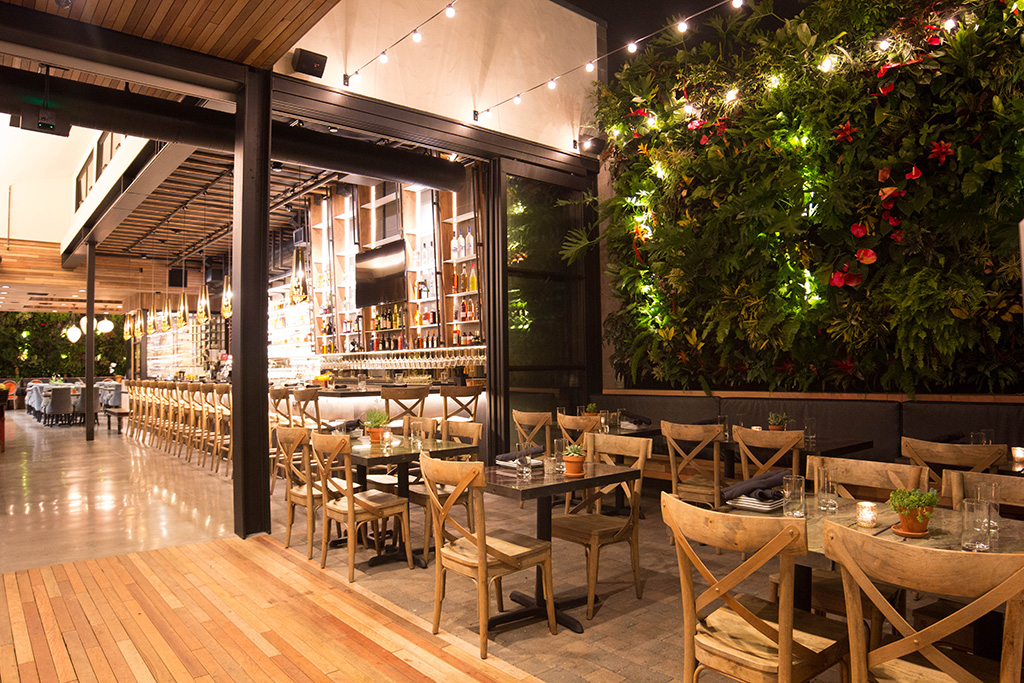
The Patio on Goldfinch, San Diego, Designed by Lahaina Architects / Texture Inc.
Beatriz Arrues, an integral part of the design team for The Patio Restaurant Group, has been instrumental in implementing “living green walls” in Southern California. The newly opened Patio on Goldfinch in San Diego’s Mission Hills neighborhood is just one location incorporating this beautiful design. The green wall spans two stories and is comprised of local San Diego plants, Hawaiian botanicals, and even carnivorous species. The living wall has a custom-built irrigation system and is maintained by her team.
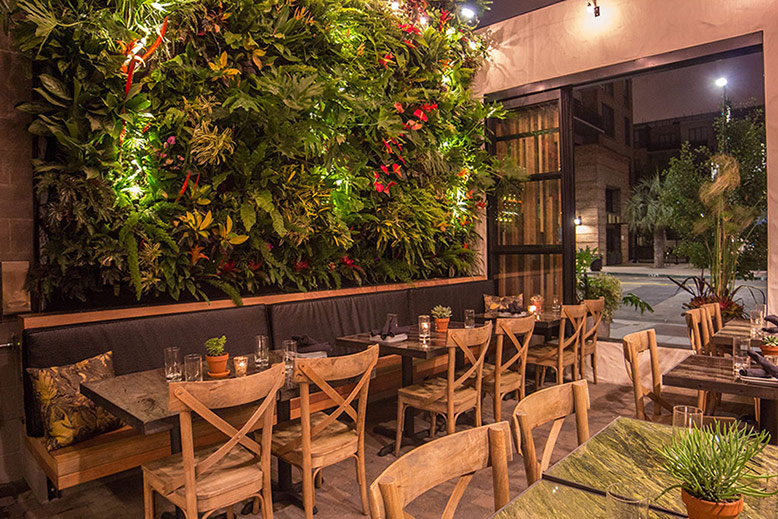
The Patio on Goldfinch, San Diego, Designed by Lahaina Architects / Texture Inc.
Hongqiao International Medical Center Shared Facility

Hongqiao International Medical Center Shared Facility, Shanghai, designed by Gresham Smith Architects
The Hongqiao International Medical Center in Shanghai is a superb example of using interior landscape design to assist in the healing process. Studies suggest that well-designed gardens can improve health outcomes for patients, and reduce stress in healthcare workers and patients’ families as well as in the patients themselves. Gardens provide spaces for patients to relax, to enjoy either privacy or socialization, and to take a break from the clinical environment. Gardens can also be used as a more peaceful setting for some physical therapy activities. Finally, plants can remove up to 50 to 50 percent of airborne molds and bacteria, dramatically improving the indoor air quality.
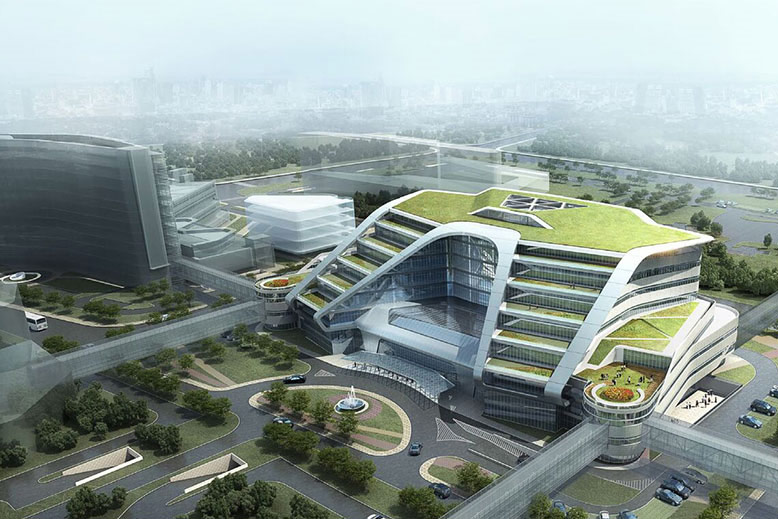
Hongqiao International Medical Center Shared Facility, Shanghai, designed by Gresham Smith Architects
In a society that is rapidly evolving to satisfy our thirsts for faster technologies and greater convenience, the implementation of interior landscape design in a project is not only trendy, but a necessity. Interior landscapes can be aesthetically pleasing, adding a layer of lushness to a space, while providing benefits unmatched by any other material or finish. More and more designers, clients and consumers are waking up to the need to preserve the quality of our environment, and in response the design world is creating spaces and products that are simultaneously innovative and eco-conscious.
Sources
http://www.interiorsandsources.com/article-details/articleid/16394/title/british-gas-goes-green.aspx
http://www.dana-farber.org/About-Us/Yawkey-Center/Looking-at-the-Yawkey-Center.aspx
http://www.kenneyarchitects.com/
http://architizer.com/projects/shanghai-new-hongqiao-international-medical-center-shared-facility/
http://www.verticalgardenpatrickblanc.com/node/1368
Design Innovations for Aging and Alzheimer’s by Elizabeth Brawley (Wiley, 2006)
Biophilic Design by Stephen R. Kellert, Judith H. Heerwagen and Martin L. Mador (Wiley, 2008)